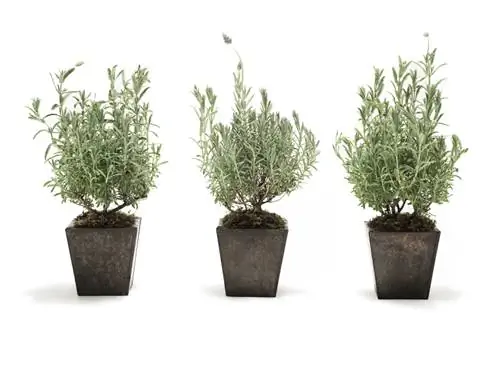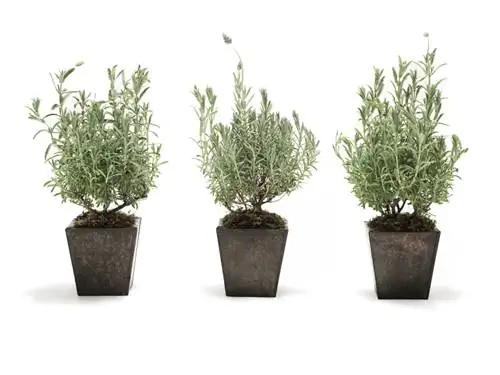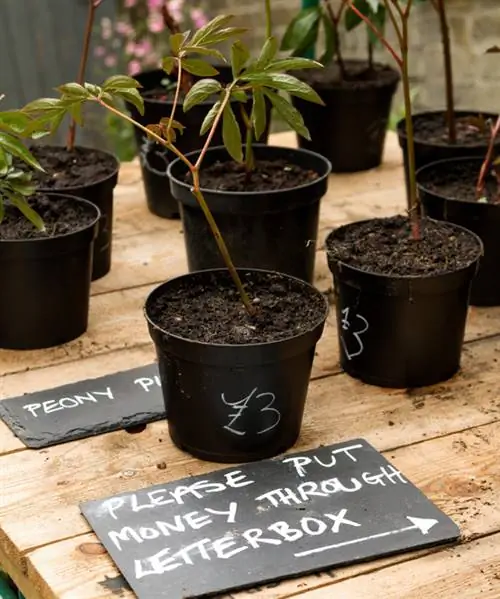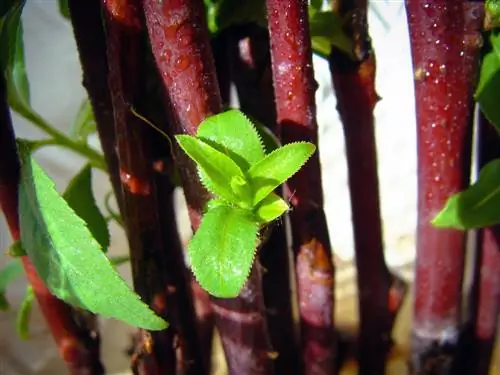- Author admin [email protected].
- Public 2023-12-16 16:46.
- Last modified 2025-01-23 11:20.
Lavender can - provided the conditions are right - be propagated very well via seeds, cuttings or even planters.

How do you plant lavender cuttings?
To successfully plant lavender cuttings, select green branches near the ground, dig a planting hole, place the branch in it and cover it with soil. Weight the sinker with a stone and keep it moist until roots emerge.
Plant offshoots
Although lavender plants do not form classic offshoots, such as those known from strawberries, they can be multiplied in a similar way using so-called lowering plants. With this method, the young plants need an average of three to four months, a little longer than cuttings to take root. In contrast to propagation from cuttings, sinkers are not separated from the mother plant, but are further supplied with water and nutrients from it. Only when the young lavender plants have developed roots themselves can they be cut off. For this method, do the following:
- Select one or more green branches that grow on the outside of the plant and near the ground.
- Dig a small planting hole below the selected sinker.
- Place the branch in the middle so that the top, flowering part sticks out the other side of the hole.
- Cover the stem inside the planting hole with soil.
- Weigh down the area with a stone or something similar, otherwise the countersink could slip out.
- Keep the area moist but not wet.
Sinkers should not be planted too late. The best time is in May, as soon as night frosts are no longer expected.
Relocating young plants
After about three to four months, the young plants can finally be separated from the mother plant. To do this, cut off the lowering directly on the mother plant so that no stub is left. Use a sharp and clean knife to cut. Now the young plant can be carefully dug out of the ground, taking care not to damage any roots if possible. Place the new lavender plant either in a pot or directly into its new location in the bed. However, planting in a pot would be recommended so that the young plant can overwinter under cold house conditions. Young lavender plants are more sensitive to adverse weather conditions than perennial plants and must therefore be treated more carefully. From around mid to late May of the following year, the lavender can finally go to its new destination.
Tips & Tricks
It's best to cut the young lavender plants back in spring, as this will encourage bushy growth and lush flowering.






